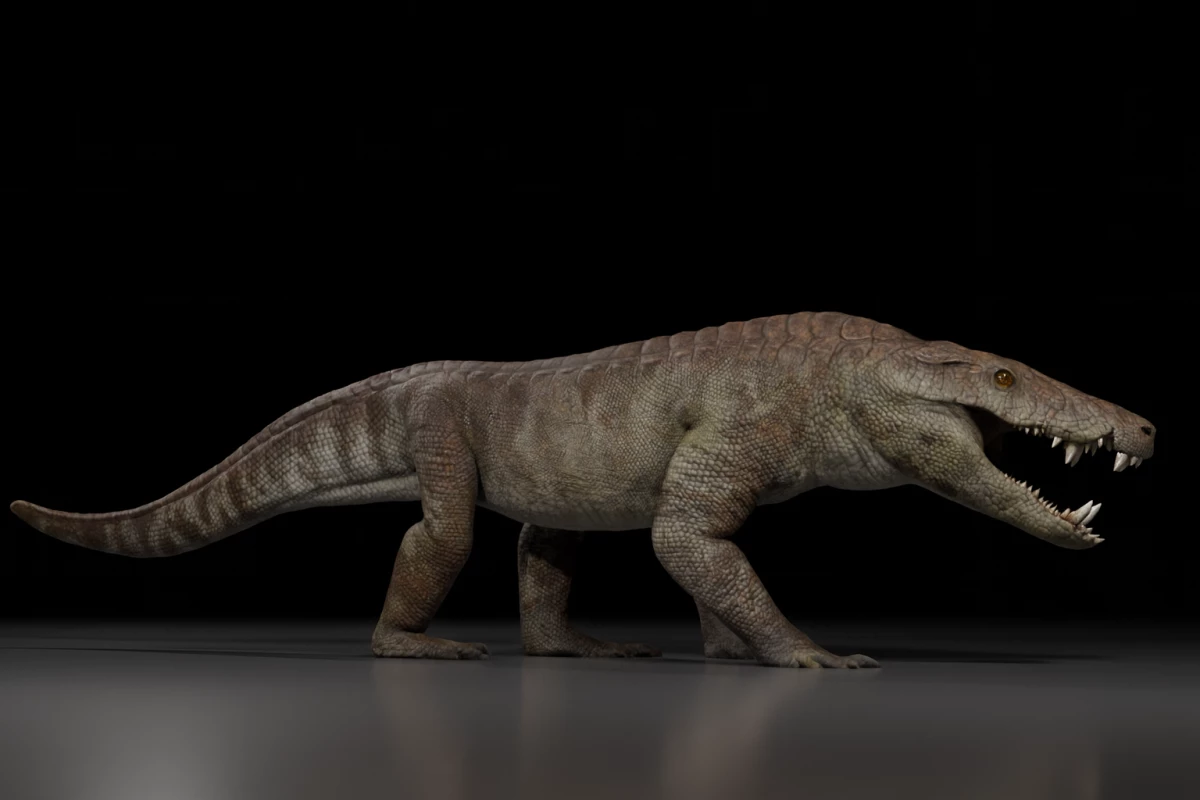A remarkably preserved skeleton of a giant meat-eating relative of modern crocodiles has been discovered in Patagonia, Argentina. The new species, named Kostensuchus atrox, lived approximately 70 million years ago and is believed to have preyed on medium-sized dinosaurs. This significant find enhances the understanding of ancient ecosystems just before the Cretaceous period ended due to an asteroid impact.
The skeleton was unearthed near El Calafate, providing a rare glimpse into the physiology and behavior of this extinct crocodyliform. An international team of paleontologists, led by scientists from the Museo Argentino de Ciencias Naturales (MACN), have meticulously described the features of K. atrox, which was a formidable land predator reaching lengths of about 3.5 meters (11.5 feet) and weighing around 250 kilograms (551 pounds).
Insights into Predatory Behavior
The skull of Kostensuchus atrox reveals its predatory adaptations. Its short, deep skull supported powerful jaw muscles, and its serrated teeth—twice the size of those found in earlier crocodyliforms—were specifically designed for slicing through flesh rather than gripping it. Characterized as a “hypercarnivore,” K. atrox primarily consumed meat, indicating its role as an apex predator in its environment.
The name Kostensuchus honors both the cultural heritage of the region and ancient mythology. “Kosten” derives from the Aonikenk (Tehuelche) word for the strong winds of Patagonia, while “suchus” refers to the crocodile-headed Egyptian god, Sebek. The species name “atrox” translates to “harsh” in Greek, further emphasizing its predatory nature.
Evolutionary Significance
This discovery not only introduces a new species but also a new genus, enriching the evolutionary narrative of crocodyliforms. Previously, most peirosaurids have been identified only from fragmented remains, making the full understanding of their anatomy and lifestyle challenging. The articulated skeleton of K. atrox provides critical data for studying the relationships among broad-snouted peirosaurids, which thrived during the Cretaceous in regions of South America, Africa, and Madagascar.
The research team highlighted the importance of this find: “The discovery of Kostensuchus considerably expands knowledge about the anatomy of broad-snouted peirosaurids, previously known from extremely fragmentary remains.” The ability to analyze its well-preserved skull allows scientists to better understand the morphological traits of these ancient predators.
Comparative analysis with other crocodyliforms suggests that K. atrox was highly adapted for a terrestrial lifestyle, in contrast to modern crocodiles that typically employ a more ambush-based hunting strategy. Its robust build and dentition indicate it tackled prey directly, making it an active hunter capable of grappling with its catch.
The fossils found in the Maastrichtian Chorrillo Formation paint a vivid picture of the ecosystem in Patagonia before the mass extinction event. While dinosaurs were the most prominent predators, crocodyliforms like Kostensuchus atrox likely shared the upper echelons of the food chain, competing for similar prey.
This discovery not only marks a significant milestone in paleontology but also contributes to the broader understanding of the diversity and evolution of crocodyliforms. The findings have been published in the journal PLOS One, offering a benchmark for future comparisons with other fossils.
As researchers continue to explore the remnants of ancient life, Kostensuchus atrox serves as a reminder of the complex ecosystems that once thrived on Earth and the intricate web of life that existed alongside the dinosaurs, ultimately lost to time and catastrophe.
